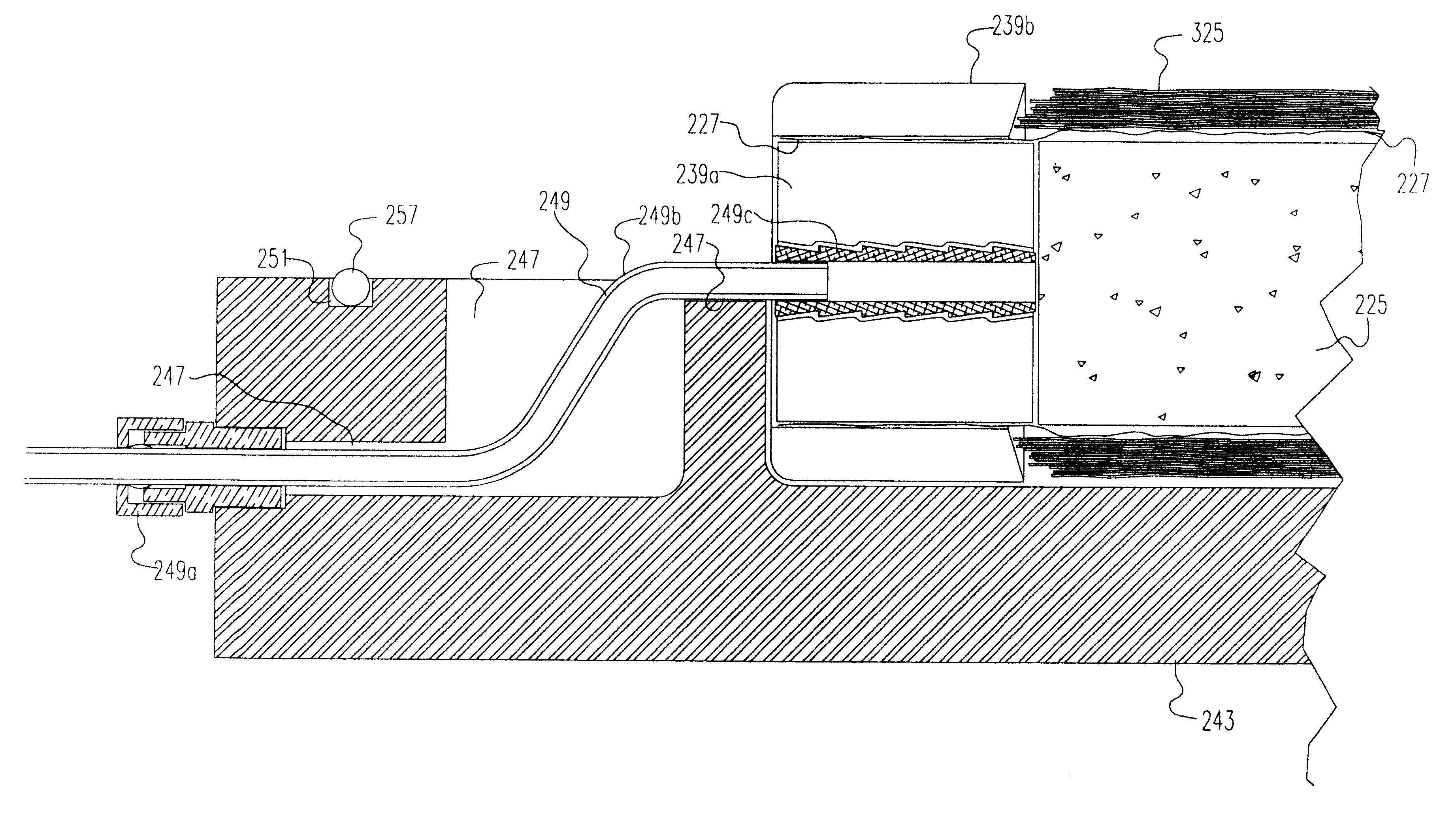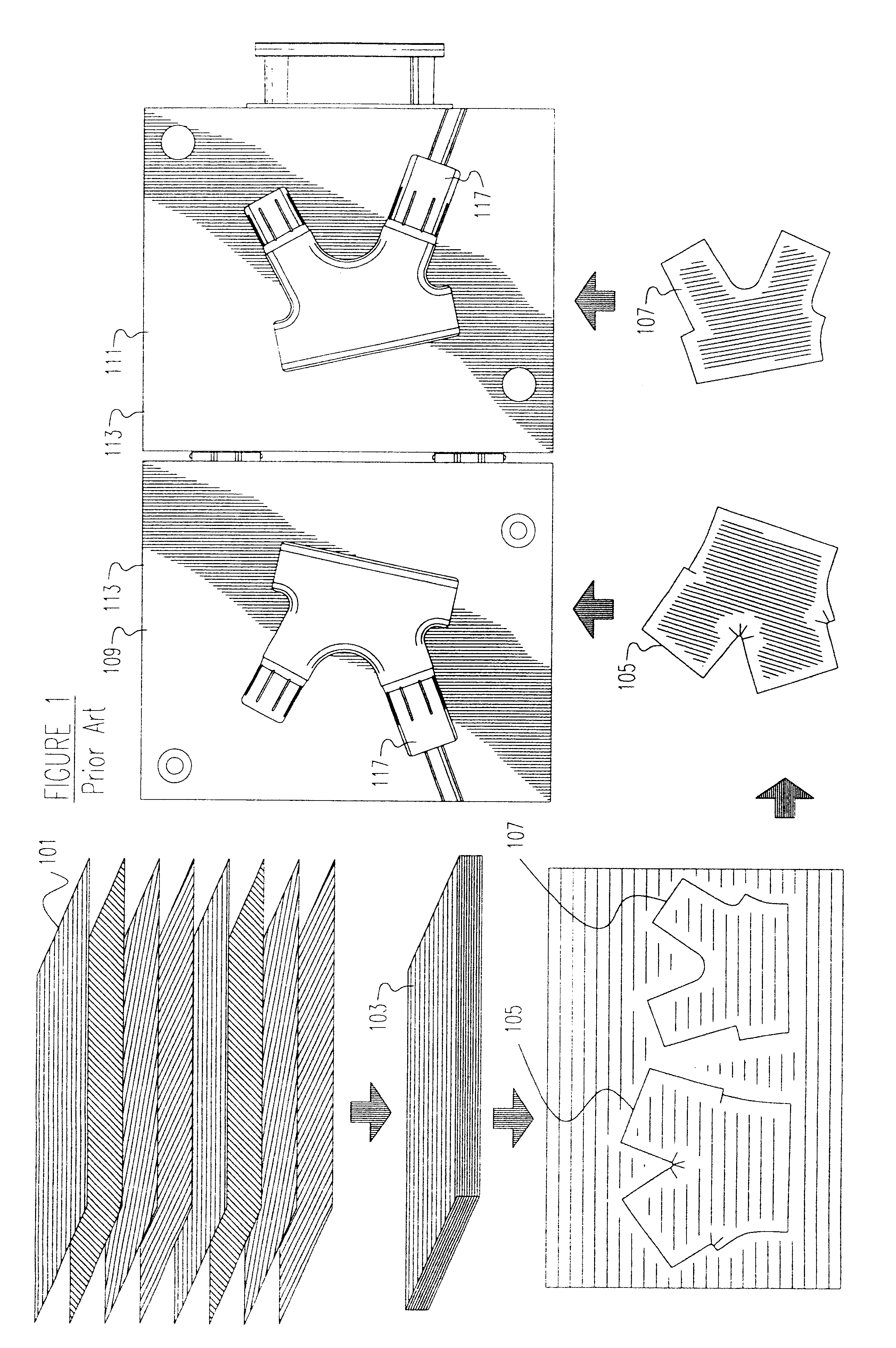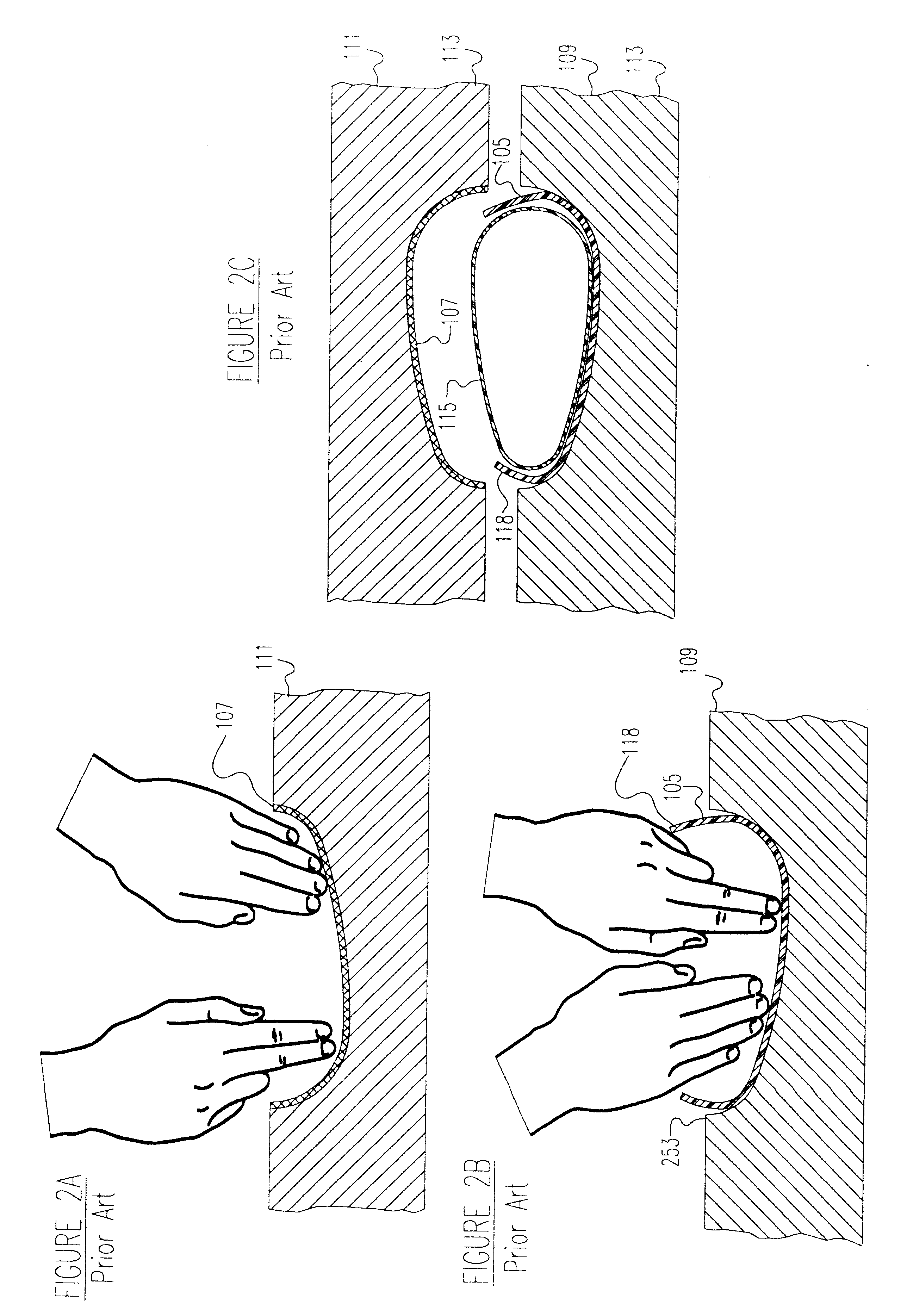Method for manufacturing composite bicycle frame
a composite frame and bicycle technology, applied in the field of bicycle frames, can solve the problems of corresponding frame strength loss, inability to manufacture bicycle frames according to these known processes, and inability to meet mass production, so as to avoid the extra weight and reduce the effect of strength
- Summary
- Abstract
- Description
- Claims
- Application Information
AI Technical Summary
Benefits of technology
Problems solved by technology
Method used
Image
Examples
Embodiment Construction
Comparative Discussion of the Prior-art
For some time it has been known to produce bicycle frames by interconnecting composite tubes with composite lugs. Composite lugs have been used to interconnect composite tubes and to make a entirely hollow bicycle frames. See U.S. Pat. No. 5,624,519, to Nelson, et al.
Reference is now made to FIG. 1, which is a schematic flow sheet of an illustrative prior-art method. In the prior-art, individual plies 101 of resin impregnated carbon fibers are assembled into a multi-ply stack 103. The multi-ply stack is cut to form two preforms 105, 107, which are then placed in the bottom 109 and top 111, respectively of a two-piece female mold 113.
Reference is now made to FIGS. 2A, 2B and 2C. In FIG. 2A, top preform 107 comprising layers of composite material is placed in the top mold half 111. In a similar manner in FIG. 2B, bottom preform 105 comprising layers of composite material is placed in the cavity of the bottom mold half 109. Referring to FIG. 2C, a...
PUM
| Property | Measurement | Unit |
|---|---|---|
| length | aaaaa | aaaaa |
| thickness | aaaaa | aaaaa |
| thickness | aaaaa | aaaaa |
Abstract
Description
Claims
Application Information
 Login to View More
Login to View More - R&D
- Intellectual Property
- Life Sciences
- Materials
- Tech Scout
- Unparalleled Data Quality
- Higher Quality Content
- 60% Fewer Hallucinations
Browse by: Latest US Patents, China's latest patents, Technical Efficacy Thesaurus, Application Domain, Technology Topic, Popular Technical Reports.
© 2025 PatSnap. All rights reserved.Legal|Privacy policy|Modern Slavery Act Transparency Statement|Sitemap|About US| Contact US: help@patsnap.com



